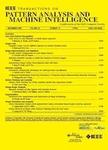版权所有:内蒙古大学图书馆 技术提供:维普资讯• 智图
内蒙古自治区呼和浩特市赛罕区大学西街235号 邮编: 010021

作者机构:Purdue Univ Sch Elect Engn W Lafayette IN 47907 USA Univ Texas Austin Dept Comp Sci Austin TX 78712 USA
出 版 物:《IEEE TRANSACTIONS ON PATTERN ANALYSIS AND MACHINE INTELLIGENCE》 (IEEE Trans Pattern Anal Mach Intell)
年 卷 期:2025年第47卷第1期
页 面:514-528页
核心收录:
学科分类:0808[工学-电气工程] 08[工学] 0812[工学-计算机科学与技术(可授工学、理学学位)]
基 金:US National Science Foundation [FW-HTF 1839971]
主 题:Skeleton Real-time systems Mathematical models Streaming media Predictive models Ordinary differential equations Accuracy Transformers Data models Topology Human action recognition human motion prediction neural ODE online action recognition
摘 要:Skeleton-based action recognition has made significant advancements recently, with models like InfoGCN showcasing remarkable accuracy. However, these models exhibit a key limitation: they necessitate complete action observation prior to classification, which constrains their applicability in real-time situations such as surveillance and robotic systems. To overcome this barrier, we introduce InfoGCN++, an innovative extension of InfoGCN, explicitly developed for online skeleton-based action recognition. InfoGCN++ augments the abilities of the original InfoGCN model by allowing real-time categorization of action types, independent of the observation sequence s length. It transcends conventional approaches by learning from current and anticipated future movements, thereby creating a more thorough representation of the entire sequence. Our approach to prediction is managed as an extrapolation issue, grounded on observed actions. To enable this, InfoGCN++ incorporates Neural Ordinary Differential Equations, a concept that lets it effectively model the continuous evolution of hidden states. Following rigorous evaluations on three skeleton-based action recognition benchmarks, InfoGCN++ demonstrates exceptional performance in online action recognition. It consistently equals or exceeds existing techniques, highlighting its significant potential to reshape the landscape of real-time action recognition applications. Consequently, this work represents a major leap forward from InfoGCN, pushing the limits of what s possible in online, skeleton-based action recognition.